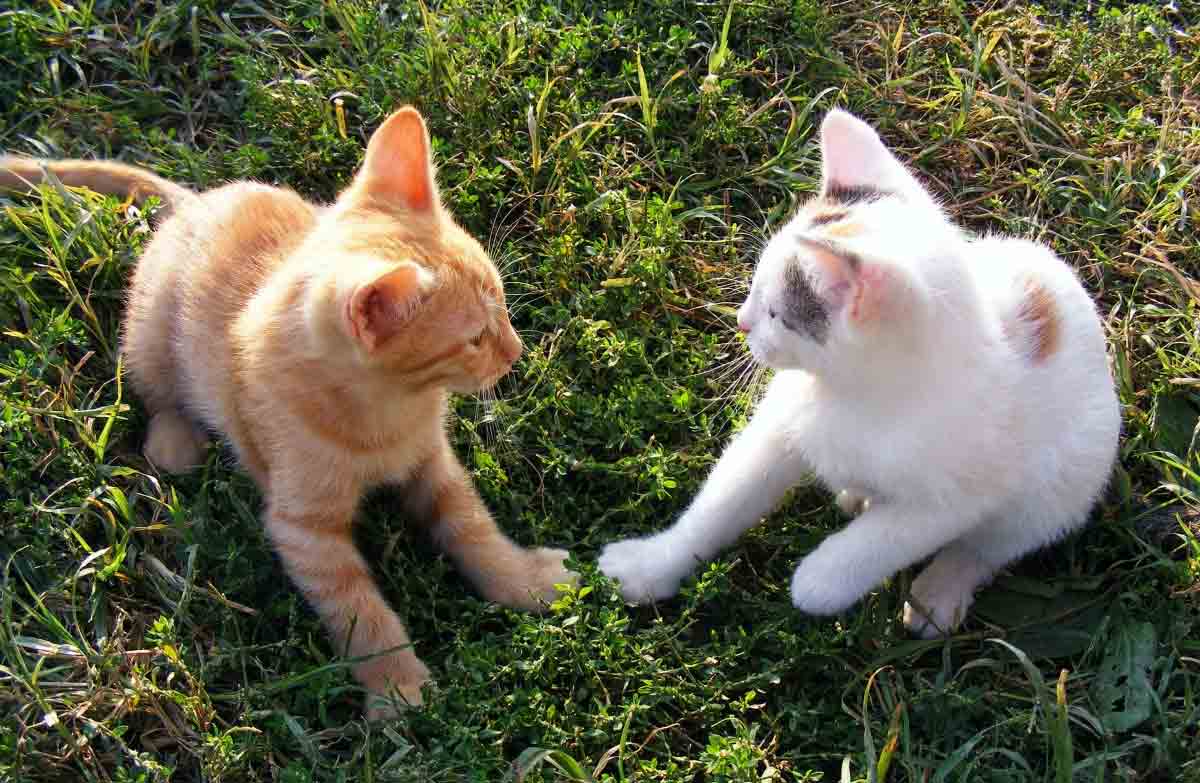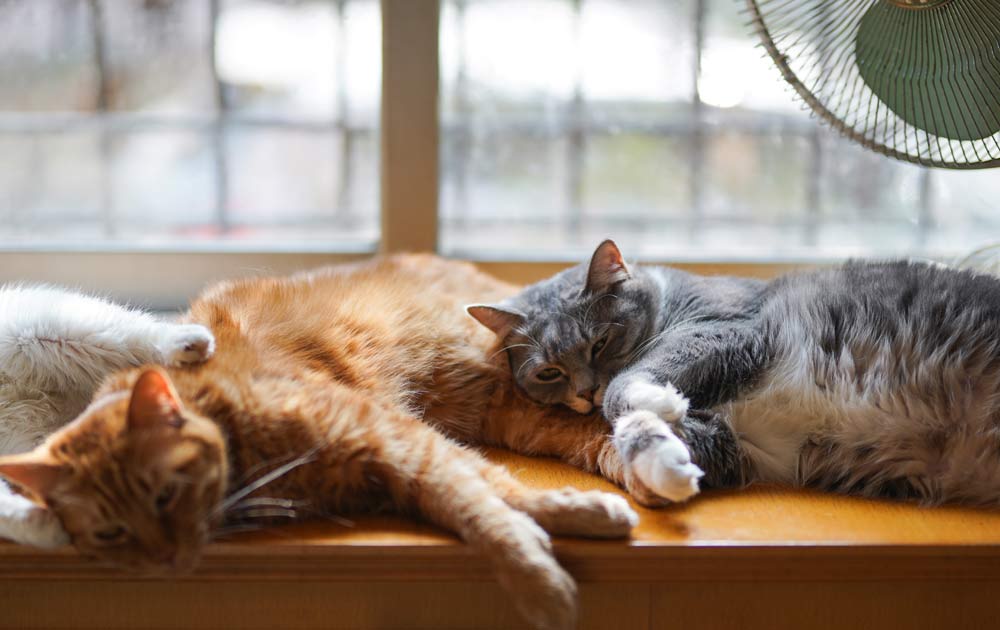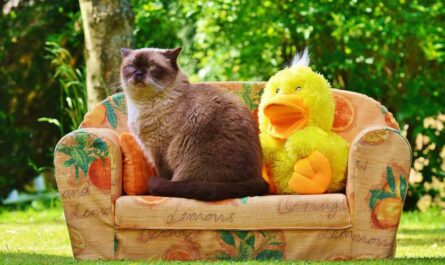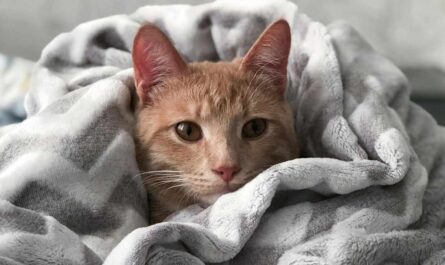How do cats communicate with each other? with human? What is their communicative body language? The study of feline behavior offers a captivating journey into the intricacies of how these enigmatic creatures interact with each other. The enigma surrounding cat communication not only captivates the curiosity of devoted pet parents but also intrigues the keen interest of veterinarians, creating a dynamic blend of science and pet care.
As a seasoned cat owner and a veterinarian specializing in animal behavior, my extensive experience with these creatures spans many years. Despite this, the realm of feline communication continues to unveil its secrets, presenting an ever-evolving landscape of understanding and discovery for both professionals and enthusiasts alike.
Unraveling the Layers of Cat Communication
The tapestry of cat communication is richly woven with a diverse array of elements, encompassing vocalization, body language, physical contact, and scent. The nuances of feline language range from the subtlety of a blink to the unmistakable intensity of a catfight’s hisses and yowls. Each element contributes to the complex web of signals that our domestic cats employ, creating a sophisticated means of expression from the playful antics of kittens to the more nuanced behaviors of adult cats.
Visual Cues: The Silent Language of Cats
In the intricate ballet of feline communication, visual signaling takes center stage as a pivotal component. Unlike the abruptness of physically aggressive behavior, the journey toward aggression involves a symphony of visual cues. The cat’s body becomes a canvas of expression, with changes in posture, facial expressions, and the ability to erect hair signaling the onset of communication.
1. Tail Position: The Eloquent Tail
The cat’s tail emerges as a dynamic indicator of mood, offering a spectrum of signals. An upright and tall tail denotes a friendly and approachable demeanor, with the added delight of a quivering tail signifying pleasure. Conversely, a puffed-out tail with erect hairs and lateral tail lashing signals aggression, while a tucked tail conveys submission or nervousness. A half-raised tail, however, reveals the cat’s curiosity, adding yet another layer to the feline communication repertoire.
2. Facial Expressions: The Silent Dialogue
Facial expressions serve as an eloquent form of dialogue for cats, with the eyes, ears, and mouth orchestrating the silent exchange. Narrowed pupils, fanned-out whiskers, and outward-rotated ears convey aggression, while dilated pupils, bunched whiskers, and flattened ears signal fear. The importance of eye contact cannot be overstated—direct stares without blinking translate to a challenge, while relaxed eye contact accompanied by slow blinks signifies contentment and affection.
3. Postures: The Body’s Tale
The cat’s body itself becomes a canvas of expression, with various postures communicating a spectrum of moods. The classic feline behavior of arching the back, often associated with stretching, can also indicate aggression or defensiveness. A hunting crouch, a stretched-out body ready to pounce, reveals the instincts of a seasoned hunter, while the act of rolling onto the back is perceived as an expression of friendliness or submission.
In the captivating world of feline communication, decoding the silent language of cats unveils a myriad of signals, painting a nuanced portrait of their emotional landscape. Each twitch of a whisker, every flicker of a tail, and the eloquence of a slow blink contribute to the intricate dialogue that defines the relationship between cats and those fortunate enough to share their lives.
Tactile Communication
Cats, renowned for their independence, paradoxically engage in intricate forms of physical contact within social groups. When bonded, felines demonstrate an endearing behavior known as “pillowing,” where they sleep curled up together, employing one another as comfortable pillows. Allogrooming, a mutual grooming ritual, and allorubbing, involving the rubbing of faces and bodies, serve as common tactile gestures, potentially facilitating scent transfer and olfactory communication to fortify social ties. Intriguingly, cats may also engage in subtle yet expressive actions like backing up toward each other and twining their tails, signifying a nuanced form of social communication.
Scent Cues
The olfactory realm emerges as a pivotal channel for feline communication, with scent playing a profound role. Felines, equipped with an impeccable sense of smell and a vomeronasal organ capable of processing pheromones, engage in sophisticated chemical messaging. Pheromones, intricate chemical messages, are detected when a cat contorts its face into a grimace, actively “tasting” the air. These messages convey a myriad of information, encompassing territory marking, greetings, sexual availability, warnings, and the identification of safe spaces and individuals. Cats strategically use scent glands on their cheeks, chins, and foreheads to leave nuanced scent markings, weaving a complex tapestry of messages for both themselves and their feline peers.
1. Pheromones: A Symphony of Scent
In the intricate world of feline communication, pheromones emerge as the unsung maestros orchestrating a symphony of scent. Observing your cat delicately “tasting” the air, manifesting a facial grimace, unveils their engagement in deciphering chemical messages. This olfactory ballet is choreographed by the vomeronasal organ nestled on the roof of their mouth, an anatomical marvel attuned to processing pheromones — those elusive messengers of the feline realm.
These chemical couriers, known as pheromones, transcend mere aromatic signals. They bear the profound ability to convey intricate messages with remarkable specificity, lingering in the environment like aromatic echoes. Whether delineating territorial boundaries, exchanging greetings, signaling sexual availability, or sounding cautionary warnings, pheromones weave a tapestry of communication in the secret language of cats. The feline orchestra utilizes scent glands strategically positioned on cheeks, chins, and foreheads to inscribe these olfactory missives, crafting an aromatic dialogue that resonates among both self and fellow felines.
2. Urine and Feces: Whispers of Territory
In the realm of feline communication, urine and feces emerge as clandestine mediums, weaving a narrative of territories, interpersonal dynamics, and clandestine courtships. While the propensity to spray urine transcends gender boundaries, unneutered male cats dance on the precipice of heightened likelihood, becoming artisans of this aromatic expression.
Urine, a liquid parchment of communication, speaks volumes about territorial claims, the presence of fellow felines, and the intricacies of amorous pursuits. The ritual of urine spraying becomes a nuanced ballet, choreographed by intact males, yet open to interpretation by cats of all walks. Feces, albeit less decipherable in its messaging, emerges as a subtle poet in the feline narrative. The act of defecation transforms into a choreography of concealment within the sanctum of one’s territory, an intimate burial when the boundaries are breached, revealing the enigmatic intricacies of feline conversation.
3. Aromatic Cartography: Scent as Spatial Poetry
Beyond the confines of explicit communication, scent serves as the ink with which cats draft the spatial poetry of their existence. The strategic deployment of scent markers, hailing from glands adorning cheeks, chins, and foreheads, transcends mere territorial demarcation. It becomes a visceral act of self-expression, an aromatic autobiography inscribed upon the tapestry of their surroundings.
These scent markings, intricate in their placement, encode a lexicon of safety, familiarity, and individual identity. The cat’s environment becomes an aromatic manuscript, each nuanced scent trail unraveling a saga of feline experiences. From the tender embrace of a familiar cheek to the lofty proclamation on a forehead, these scent-laden imprints narrate a story that surpasses the boundaries of spoken language, forging a language of olfactory nuance that only the discerning nose of a cat can fully comprehend.

Vocal Communications
Cats, those enigmatic feline companions, possess a remarkably expansive repertoire of vocalizations that transcends the auditory spectrum typically associated with their carnivorous counterparts. In the realm of inter-species interaction, cats communicate with humans through a symphony of sounds, ranging from the ubiquitous meow to the subtle purring that reverberates with contentment. However, the rich tapestry of feline vocalizations extends beyond the human sphere, weaving a complex web of communication within the feline community itself. Certain cat breeds, exemplified by the Siamese, elevate vocal expression to an art form, showcasing an intricate array of sounds that transcend mere meows.
1. The Meow
At the heart of cat-human discourse lies the iconic meow—an auditory bridge spanning the feline and human realms. Contrary to the assumption that meows are a universal feline language, a study conducted in Sweden unveils a captivating nuance. Adult cats, it seems, reserve the meow exclusively for their human companions, establishing a unique vocal code that transcends the boundaries of feline communication. In this nuanced soundscape, the meow becomes not merely a bid for attention but a tailored linguistic gesture aimed solely at the human ear.
2. Predatory Sounds
Amidst the nuanced tapestry of feline vocal expressions, a distinctive chatter punctuates the symphony when feline eyes lock onto prey. Akin to a primordial drumroll, this chatter serves as a prelude to the imminent pursuit of avian or mammalian quarry. Excitement finds its vocal embodiment in squeaks, harmonizing with the cat’s keen gaze fixated on the outside world. For those fortunate enough to share living quarters with a window-enthralled cat, this soundscape becomes an auditory panorama of the feline hunting spirit, an acoustic overture to the thrill of the chase.
3. Purrs
Amidst the mosaic of feline vocalizations, purring emerges as a melodious ode to contentment and camaraderie. The gentle murmur of a purr, akin to a cat’s personal sonnet, reverberates during moments of maternal bonding and communal grooming. Yet, the enchanting purr transcends the feline-social dynamic, becoming a universal language of warmth and companionship. Kittens and their mothers, locked in a harmonious duet, weave a chorus of purrs that echoes through the tender threads of feline familial bonds.
4. Aggressive Sounds
Within the complex lexicon of feline vocalizations, aggression manifests as a thunderous crescendo, heralded by raised fur, menacing hisses, and a posture poised for confrontation. Decoding the symphony of aggression proves surprisingly straightforward; vocal expressions uttered with mouths agape serve as a visceral indicator. Growls, howls, snarls, and whines emerge as the primal dialects of feline discord, signaling impending conflict. A symphony of escalating intensity ensues, culminating in spit-laden volleys and guttural wails before the visceral ballet of claws and teeth unfolds.
How do cats communicate with other cats?
The tapestry of feline communication is woven with a diverse array of methods that transcend the boundaries of human understanding. Cats employ a multisensory symphony that encompasses vocal, tactile, visual, and olfactory elements, forging a nuanced language of their own. Within this rich tapestry, scent and pheromones play a pivotal role, carrying messages that transcend the immediate, marking territories, and establishing affiliations. The dance of body position and posture, the silent poetry of facial expressions, the rhythmic cadence of grooming, and the tactile artistry of rubbing behaviors all contribute to the intricate communication network woven within the feline realm. Cat accessories on Amazon
Can cats tell each other things?
Indeed, feline communication transcends mere mood indicators; it is an intricate narrative, a dialogue etched into the very essence of their being. Vocalizations and postures, akin to the verses of an unspoken poem, serve as conduits for expressing not just emotions but complex narratives. Yet, the complexity doesn’t end there. The olfactory lexicon of cats, woven into scent messages, unfolds stories of sexual availability, territorial demarcations, and the intricate tapestry of feline social dynamics. In the subtle interplay of these multifaceted messages, cats share not just the present but the nuanced tales of their existence with their feline kin.
Do cats understand when they meow at each other?
The beguiling meow, often considered the quintessential feline vocalization, harbors a secret known only to the initiated. In the intricate tapestry of feline discourse, the meow is a melody reserved for the intimate exchanges between kittens and their maternal figures. As cats transition to adulthood, the meow undergoes a subtle metamorphosis, becoming an exclusive communication channel directed not towards their feline compatriots but, intriguingly, solely at the human cohort. Thus, the meow emerges as a sonorous bridge, a linguistic bond forged uniquely between cats and their human confidants. See why thousands of cats love BoxCat
Do cats silently communicate with each other?
Silence becomes a profound canvas upon which feline communication paints its most intricate masterpieces. Beyond the audible spectrum of vocalizations lies a vast realm of non-verbal discourse. Cats engage in an unceasing dialogue through the balletic language of posture and facial expressions, where a blink carries volumes, and the slightest twitch can convey sentiments profound and nuanced. The scent, a language encoded in molecules, adds another layer to this silent symphony, as does the tactile choreography of grooming and the tender resonance of feline bodies rubbing against each other. In this realm of non-verbal eloquence, cats exchange messages that elude the grasp of human comprehension.
Other Interesting Articles
- Cornish Rex Cat Breed: Profile, Traits, Health, Grooming, Care
- Colorpoint Shorthair Cat Breed: Profile, Traits, Grooming, Care
- Cheetoh Cat Breed: Profile, Traits, Health, Grooming, Care
- Chausie Cat Breed: Profile, Traits, Health, Grooming, Care
- Chartreux Cat Breed: Profile, Traits, Health, Grooming, Care
- Chantilly, or Tiffany Cat Breed: Profile, Traits, Grooming, Care
- Cymric Cat Breed: Profile, Traits, Health, Grooming, Care
- Dragon Li Cat Breed: Profile, Traits, Health, Grooming, Care
- Donskoy Cat Breed: Profile, Traits, Health, Grooming, Care
- European Shorthair Cat: Profile, Traits, Health, Grooming, Care
- German Rex Cat Breed: Profile, Traits, Health, Grooming, Care
- Havana Brown Cat Breed: Profile, Traits, Coats, Groom, Care
- Kurilian Bobtail Cat Breed: Profile, Traits, Coats, Groom, Care
- Korat Cat Breed Profile: Health, Traits, Coats, Groom, Care
- Javanese Cat Breed Profile: Health, Traits, Coats, Groom, Care
- Japanese Bobtail Cat Profile: Health, Traits, Coats, Groom, Care
- LaPerm Cat Breed Profile: Health, Traits, Coats, Groom, Care
- Manx Cat Breed Profile: Health, Traits, Coats, Groom, Care
- Nebelung Cat Breed Profile: Health, Traits, Groom, Care
- Norwegian Forest Breed Profile: Health, Traits, Groom, Care




